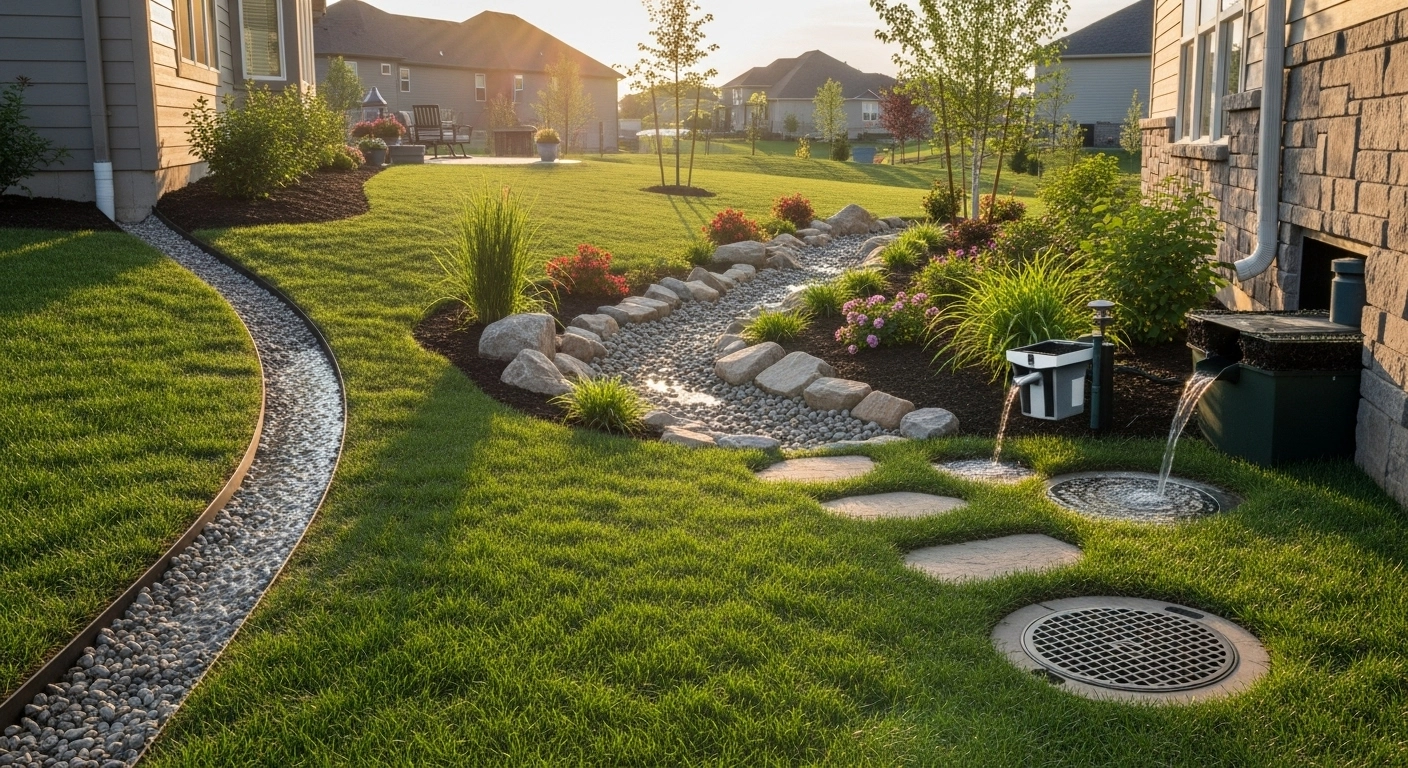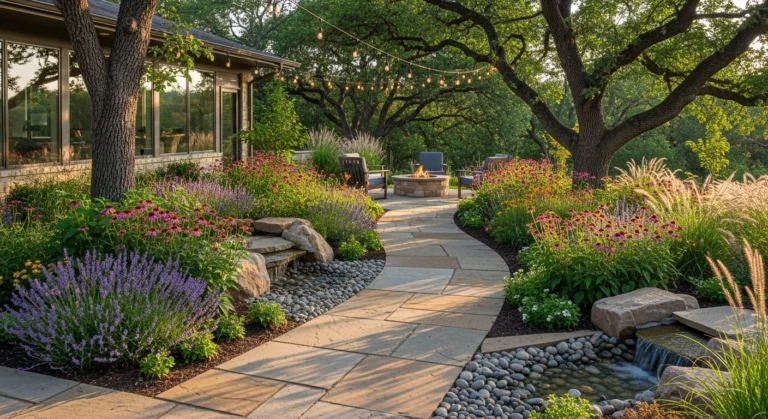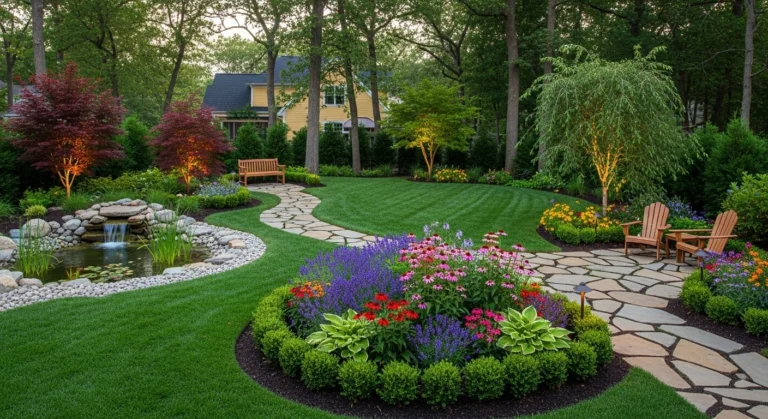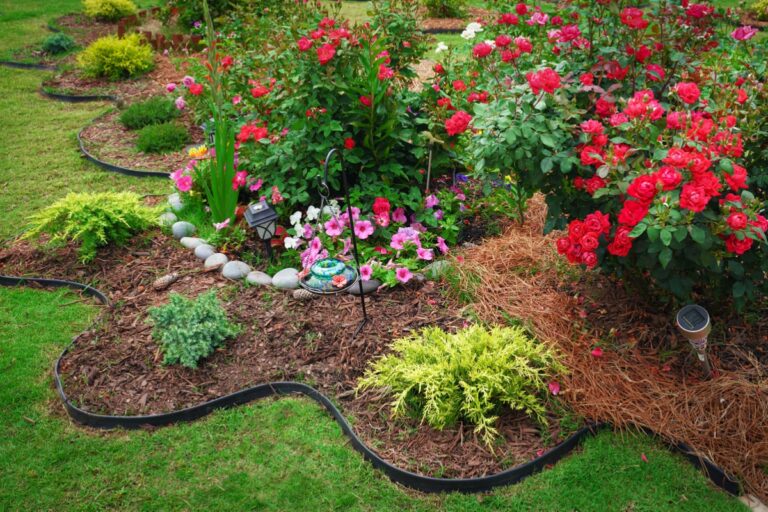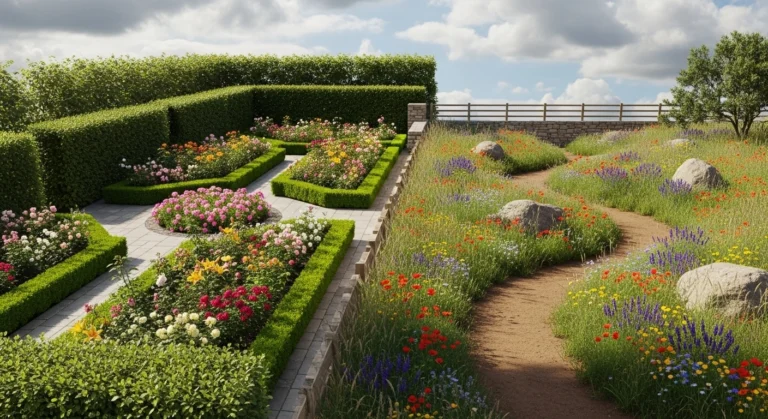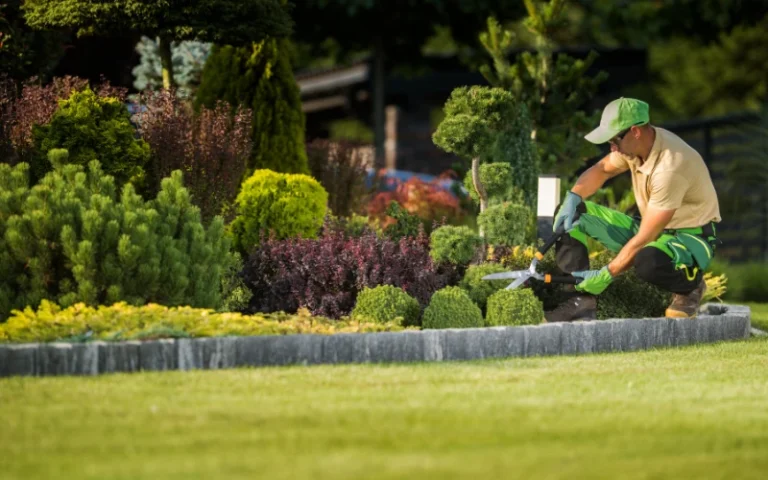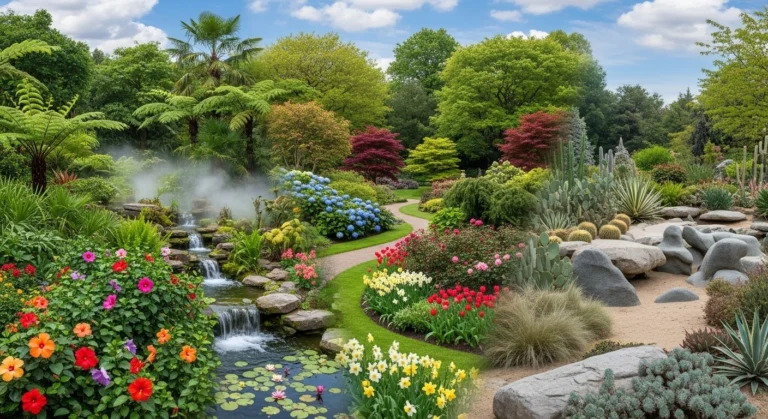Picture this: you’ve just invested thousands in beautiful landscaping, only to watch helplessly as standing water turns your dream yard into a soggy nightmare after every rainstorm. You’re not alone – poor drainage is the silent killer of landscapes across Lubbock, causing everything from foundation damage to dead plants and mosquito breeding grounds. We’ve seen homeowners deal with flooded basements, rotting deck supports, and landscaping that literally drowns because water has nowhere to go. The frustration of watching your investment deteriorate while feeling powerless to stop it is something no homeowner should endure.
Here’s the good news: effective drainage solutions can prevent these water problems before they destroy your property and peace of mind. At Lawn Care Lubbock, we’ve spent years mastering the art and science of moving water away from where it causes damage to where it can actually benefit your landscape. The secret lies in understanding that drainage isn’t just about digging ditches – it’s about creating a comprehensive system that works with Lubbock’s unique soil conditions and weather patterns. When done right, proper drainage transforms problematic areas into thriving landscapes that actually improve with each rainfall.
Why Landscape Drainage Matters More Than You Think
Most homeowners don’t think about drainage until water starts pooling in their yard, but by then, the damage is often already underway. Water damage doesn’t announce itself with fanfare – it creeps in slowly, undermining foundations, creating soft spots in lawns, and turning flower beds into swamps. We’ve responded to emergency calls where homeowners discovered their “minor drainage issue” had been quietly eating away at their home’s foundation for months.
The financial impact hits harder than most people expect. Beyond the obvious costs of replacing dead plants and repairing water damage, poor drainage can significantly reduce your property value. Structural damage from water infiltration, soil erosion around patios and walkways, and the constant need to replant areas that don’t drain properly add up quickly. Smart homeowners invest in drainage solutions upfront because they understand that prevention costs far less than remediation.
What makes drainage particularly challenging in our area is Lubbock’s clay-heavy soil and unpredictable weather patterns. When we get those sudden downpours, the water has nowhere to go in compacted clay soil, creating surface runoff that can overwhelm unprepared landscapes. This isn’t just about aesthetics – it’s about protecting your most significant investment: your home.
Common Water Problems We See in Lubbock Landscapes
Standing Water and Pooling Issues
Pooling water is the most visible sign of drainage problems, but it’s just the tip of the iceberg. We regularly encounter yards where water sits for days after a storm, creating breeding grounds for mosquitoes and slowly killing grass roots that can’t handle the constant moisture. These wet areas become muddy messes that make your yard unusable and create an eyesore that affects your home’s curb appeal.
The real problem with standing water goes beyond surface issues. When water pools consistently in the same areas, it signals that your landscape’s natural drainage patterns have been disrupted or were never properly established. This often happens during construction when heavy equipment compacts soil or when landscaping design doesn’t account for natural water flow. The result is areas where water literally has nowhere to go except down, slowly saturating the soil and creating problems below the surface.
Foundation and Structural Threats
Here’s what keeps us up at night: foundation damage from poor drainage. Water that doesn’t drain properly around your home’s perimeter can cause soil expansion and contraction, leading to foundation shifts, cracks, and potentially catastrophic structural issues. We’ve seen beautiful homes with tens of thousands of dollars in foundation repairs because water management was treated as an afterthought.
Basement flooding and crawl space moisture problems often trace back to landscape drainage issues. When your yard can’t handle water runoff, it finds alternative paths – often straight toward your home’s foundation. French drains, proper grading, and strategic landscaping services can redirect this water before it becomes a structural nightmare. The key is recognizing that your landscape and your home’s structural integrity are intimately connected.
Plant Health and Soil Problems
Root rot and plant death from waterlogged soil is heartbreaking, especially when you’ve invested in quality landscaping. Most plants, even those that tolerate wet conditions, can’t survive in constantly saturated soil. We’ve watched homeowners repeatedly replace the same plants in poorly draining areas, never addressing the underlying water management issue.
Soil erosion is another consequence that sneaks up on property owners. When water can’t infiltrate properly, it runs off the surface, carrying away your topsoil and creating channels and bare spots in your lawn. This erosion doesn’t just affect aesthetics – it removes the nutrient-rich soil that supports healthy plant growth. Our climate & soil expertise helps us design drainage solutions that preserve and protect your soil investment.
Understanding Your Property’s Drainage Needs
Assessing Your Current Drainage Situation
Proper assessment starts with observation, not excavation. We always begin by walking your property during and after rainfall to identify problem areas, but you can start this process yourself. Look for areas where water pools, where grass grows differently (often greener and more lush in wet spots), and where soil feels consistently soft or spongy.
Topography plays a huge role in drainage patterns. Your property’s natural slopes and flat areas determine where water wants to flow. We use professional tools to measure grades and identify drainage patterns, but homeowners can get a general idea by watching where water flows during heavy rains. Pay attention to where water comes from (neighboring properties, roof runoff, natural slopes) and where it tries to go.
Don’t forget about underground factors that affect drainage. Utility lines, septic systems, and even tree roots can redirect water flow in unexpected ways. We’ve encountered situations where a beautiful landscape design failed because underground obstacles weren’t considered during the drainage planning phase. This is why professional assessment often reveals issues that aren’t visible from the surface.
Soil Types and Their Impact on Drainage
Clay soil dominates much of the Lubbock area, and it presents unique drainage challenges. Clay holds water like a sponge but doesn’t let it move through quickly, creating surface runoff and localized flooding. However, clay isn’t automatically bad – when properly managed, it can actually help retain moisture for plants during dry periods.
Sandy soil areas drain quickly but can create their own problems, including nutrient leaching and difficulty maintaining consistent moisture for plants. The key is understanding your specific soil composition and designing drainage solutions that work with, not against, your soil type. Our experience with local soil conditions helps us recommend appropriate amendments and drainage strategies.
Soil compaction from foot traffic, equipment, or construction can turn even well-draining soil into a water-shedding surface. We often recommend soil testing and amendment as part of comprehensive drainage solutions. Sometimes the fix is as simple as aerating and adding organic matter, while other situations require more extensive intervention.
Types of Drainage Solutions That Actually Work
Surface Drainage Systems
Swales and berms are among our most effective tools for managing surface water flow. A well-designed swale channels water away from problem areas while a strategically placed berm redirects flow where you want it to go. These solutions work with your landscape’s natural contours and can be made beautiful with appropriate plantings that don’t impede water flow.
Catch basins and drain inlets handle concentrated water flow from roofs, patios, and other hard surfaces. We position these strategically to capture runoff before it can cause problems, directing it into underground drainage systems or appropriate discharge areas. The key is sizing them correctly for your specific water volume and connecting them to adequate outlet systems.
Grading and contouring might sound basic, but proper slope management is the foundation of all effective drainage. We’ve seen expensive drainage systems fail because the basic grading wasn’t right. Even a 2% slope can make the difference between water flowing away from your home and pooling against your foundation.
Subsurface Drainage Options
French drains are our go-to solution for chronic wet areas that need underground water management. These systems use perforated pipes surrounded by gravel to collect and redirect groundwater and surface infiltration. When properly installed with the right materials and adequate outlets, French drains can transform unusable wet areas into prime landscaping real estate.
Drainage tile systems work similarly to French drains but are typically more extensive, creating networks of underground pipes that manage water across larger areas. We often install these during major landscape maintenance projects or new construction, where comprehensive water management is essential from day one.
Dry wells and infiltration systems provide on-site water management by creating underground reservoirs that allow water to slowly infiltrate into surrounding soil. These work particularly well in areas where you can’t discharge to storm sewers or natural drainage ways. The key is proper sizing and location to ensure they don’t create new problems while solving existing ones.
Professional Installation vs. DIY Approaches
When to Call the Professionals
Complex grading projects require professional equipment and expertise that most homeowners don’t possess. Moving significant amounts of soil, creating precise slopes, and ensuring proper drainage patterns across large areas is both art and science. We’ve seen well-intentioned DIY projects create bigger problems than they solved, especially when drainage requirements weren’t properly calculated.
Underground utility conflicts make professional installation essential for many drainage projects. We have the tools and knowledge to locate existing utilities and work around them safely. Hitting a gas line or electrical cable during a DIY drainage project can be dangerous and expensive, not to mention the disruption to essential services.
Permit requirements and local regulations often apply to drainage projects, especially those that affect stormwater runoff or connect to municipal systems. Our experience with local codes and permit processes ensures your project meets all requirements and won’t cause problems down the road.
DIY-Friendly Solutions
Simple surface drainage improvements like adding soil to create gentle slopes or installing basic gutters and downspout extensions are well within most homeowners’ capabilities. These projects can provide significant benefits with minimal investment, especially when they’re part of a larger drainage strategy.
Plant selection for wet areas is something homeowners can tackle themselves with proper guidance. Choosing plants that thrive in moist conditions can transform problem areas from eyesores into attractive landscape features. The key is selecting species that can handle both wet and dry conditions, since even poorly draining areas can dry out during extended dry periods.
Basic maintenance tasks like cleaning gutters, maintaining existing drainage systems, and monitoring for new problem areas are essential DIY activities that protect your drainage investment. Regular maintenance prevents small issues from becoming major problems and extends the life of professional drainage installations.

